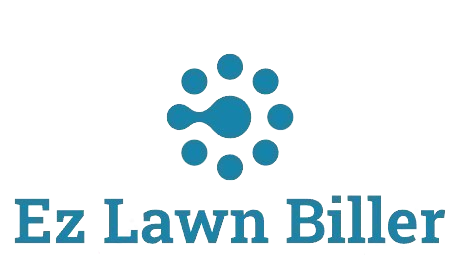Stay compliant and ahead of regulations with these essential tools for your business.
Top Tools to Help You Stay Compliant
Maintaining compliance in today’s complex regulatory landscape is no small feat. With rapidly changing laws and regulations across various industries, businesses must prioritize compliance to avoid costly penalties and legal issues. In this blog post, we will explore the top tools that can assist businesses in staying compliant, ranging from software solutions to management systems. By the end of this post, you’ll have a comprehensive understanding of how these tools can streamline your operations and protect your business.
In the digital age, compliance tools are more essential than ever. Whether you are managing a small business or running a large corporation, the challenge of adhering to industry regulations is omnipresent. These regulations can pertain to financial reporting, data protection, environmental standards, and much more. The consequences of non-compliance are severe, including fines, legal repercussions, and damage to reputation.
This article is not just about understanding compliance; it’s about equipping yourself with the right tools to ensure you stay compliant. We will cover various categories of compliance tools, including automated compliance management systems, risk assessment tools, and training platforms. Each tool is designed to simplify complex processes, enhance efficiency, and reduce human error.
1. Compliance Management Systems
Compliance management systems (CMS) are software solutions that help organizations streamline their compliance processes. These tools enable businesses to track regulations, manage documentation, and ensure adherence to industry standards. A robust CMS offers features like centralized information repositories, automated alerts for regulatory changes, and compliance audits.
For example, a CMS like [ComplyAdvantage](https://complyadvantage.com/) can help businesses in the financial sector automate their compliance processes, reducing the risk of human error and ensuring timely updates on changes in regulations. With automated workflows, these systems save time and empower employees to focus on their core responsibilities.
Moreover, many CMS tools offer customizable dashboards that provide insights into compliance status across various departments. This visibility is critical for large organizations with multiple compliance requirements, as it allows for proactive management of compliance-related issues.
2. Risk Assessment Tools
Risk assessment tools play a vital role in helping businesses identify, analyze, and mitigate risks associated with non-compliance. These tools often provide methodologies for assessing potential risks and offer solutions for managing those risks effectively. Utilizing risk assessment tools can lead to more informed decision-making and strategic planning.
One notable tool is [LogicManager](https://www.logicmanager.com/), which specializes in risk management. LogicManager provides a platform for identifying compliance risks and developing mitigation strategies based on real-time data and analytics. By utilizing such tools, businesses can ensure that they are not only compliant but also prepared for potential regulatory changes.
Furthermore, regular risk assessments help organizations stay ahead of compliance challenges by proactively addressing gaps or vulnerabilities in their processes. This approach can prevent compliance issues before they arise, saving time and resources in the long run.
3. Training and Education Platforms
Educating employees about compliance is crucial for any organization. Training and education platforms provide staff with the necessary knowledge to understand compliance requirements and implement best practices. These platforms often include modules that cover various compliance topics, from data protection to industry-specific regulations.
For instance, [Skillsoft](https://www.skillsoft.com/) offers a comprehensive library of compliance training courses that can be tailored to fit an organization’s needs. With interactive content and assessments, these platforms engage employees and enhance their understanding of compliance issues.
Moreover, regular training sessions help reinforce a culture of compliance within the organization. By investing in employee education, companies can significantly reduce the risk of non-compliance resulting from ignorance or misunderstanding of regulations.
4. Document Management Systems
Documentation is at the heart of compliance. A robust document management system (DMS) helps organizations create, store, and manage documents related to compliance efficiently. These systems streamline the documentation process, making it easier for businesses to maintain accurate records and demonstrate compliance during audits.
Tools like [M-Files](https://www.m-files.com/) provide an intelligent information management solution that automates document workflows and ensures that all compliance-related documents are readily accessible. This capability is critical for industries that face stringent regulatory requirements, such as healthcare and finance.
Additionally, implementing a DMS helps businesses avoid the pitfalls of document mismanagement, such as lost files or outdated versions. Keeping accurate and up-to-date documentation is essential for demonstrating compliance and protecting your organization from potential liabilities.
5. Automated Reporting Tools
Automated reporting tools simplify the process of generating compliance reports, saving time and reducing the likelihood of errors. These tools collect data from various sources and generate comprehensive reports that can be used for audits or regulatory submissions. Automation ensures that reports are consistent and delivered on time.
For example, [Zoho Reports](https://www.zoho.com/reports/) allows businesses to create custom reports based on their specific compliance needs. The ability to visualize data through graphs and charts makes it easier to analyze compliance metrics and identify areas for improvement.
Moreover, automated reporting tools help organizations stay agile in the face of regulatory changes by adapting reporting templates to accommodate new requirements seamlessly. This flexibility is invaluable for organizations that operate in rapidly changing regulatory environments.
6. Data Protection and Privacy Tools
With the advent of stringent data protection regulations like GDPR and CCPA, businesses must leverage data protection tools to ensure compliance. These tools help organizations manage and protect sensitive information, ensuring that they meet legal obligations regarding data handling.
Tools like [OneTrust](https://www.onetrust.com/) offer comprehensive data privacy management solutions that assist businesses in mapping data flows, conducting privacy impact assessments, and managing consent. By utilizing such tools, businesses can build trust with their customers while ensuring compliance with data protection laws.
Furthermore, effective data protection tools provide organizations with the means to respond quickly to data breaches, safeguarding their reputation and minimizing potential legal ramifications. The proactive management of data privacy is not just a compliance issue; it’s a business imperative.
Conclusion
In summary, staying compliant in today’s regulatory landscape requires the right tools and strategies. From compliance management systems to data protection tools, each solution plays a vital role in helping businesses navigate the complexities of compliance.
As compliance becomes increasingly critical to business success, investing in these tools is essential. They not only help prevent costly penalties but also foster trust and credibility with clients and stakeholders. In this rapidly changing environment, businesses that prioritize compliance and equip themselves with the right tools will be better positioned to thrive.
Don’t wait until compliance issues arise; take proactive steps to ensure your business remains compliant with the industry regulations. Explore the options available to you, and consider implementing these tools to safeguard your organization’s future.




